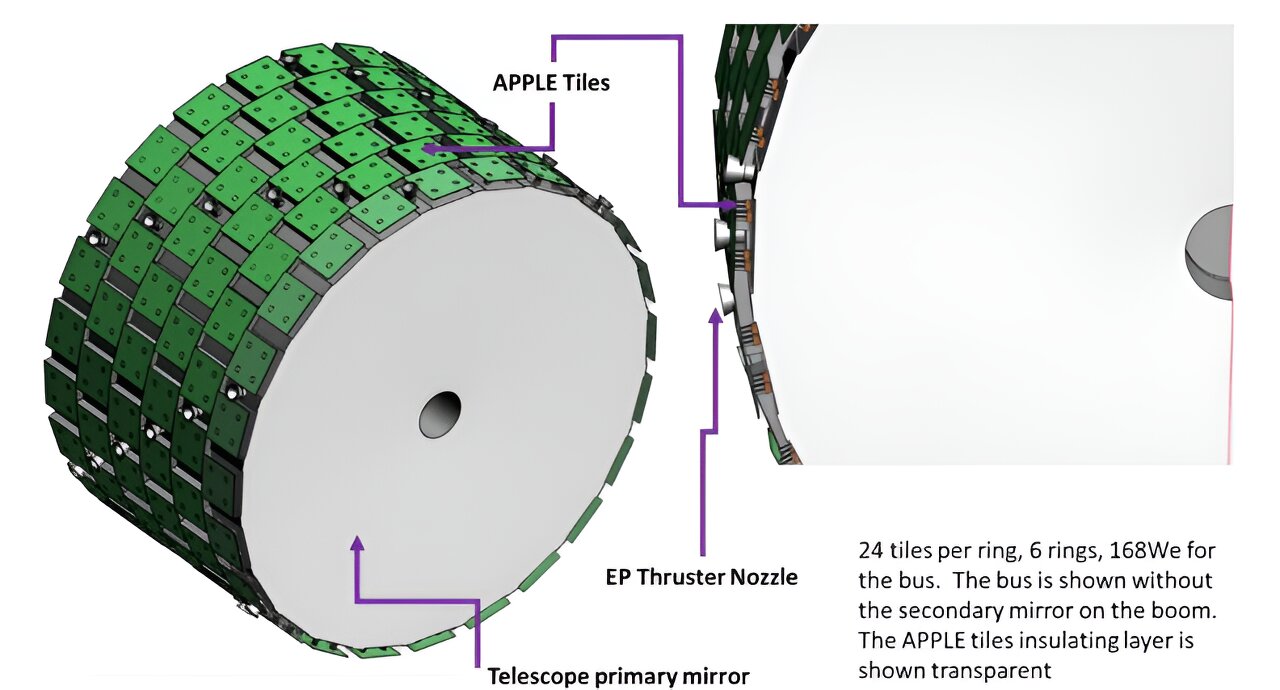Radioisotope thermoelectric generators (RTGs) have been the power plants of interplanetary spacecraft for almost 50 years. However, they come with a major drawback – they’re heavy. Even modern-day RTG designs weigh hundreds of kilograms, making them suitable for large-scale missions but impractical for smaller missions to the outer planets. Solar sails aren’t much better, with a combined solar sail and battery system weighing more than twice as much as a similarly powered RTG.
To address this issue, a group of engineers from the Aerospace Corporation and the US Department of Energy’s Oak Ridge National Lab developed a solution that significantly reduces the size of an RTG, making it suitable for smaller missions. This concept, known as the Atomic Planar Power for Lightweight Exploration (APPLE) project, focuses on three main goals:
- Generate Power
- Store that power
- Provide heat to other spacecraft components
The first goal is self-explanatory, as it aligns with the objectives of previous RTGs. The second goal addresses the weakness of RTGs, which gradually lose power over time. APPLE solves this problem by combining energy generation and storage in a single package that can either radiate heat away or direct it to other components. What sets APPLE apart is its unique design – it consists of tiles that output and store a specific amount of power. These tiles can be single-sided, coating the outside of the spacecraft to radiate waste heat, or dual-sided, isolated on a strut from the spacecraft like a solar sail.
What’s even more impressive is that these tiles can be strung together to increase power output. Need more power? Simply add more tiles. The APPLE project involved a series of design decisions, including the choice of isotope. The engineers settled on Plutonium-238, which offers a good balance of heat generation and radiation shielding requirements.
Radiation shielding was a crucial consideration, as it influenced the placement of batteries in the tiles and their material composition. Extensive radiation simulations were conducted to ensure that cosmic rays, rather than the highly fissile material within the tiles, would be the primary radiation source affecting the battery materials over the mission’s lifetime. Other positioning considerations, such as the placement of the “hot shoe” and “cold shoe” in the thermoelectric system, were also taken into account.
The APPLE team has made progress in developing battery components and a radiation test setup. However, it’s unclear whether the project has received further funding or reached a specific technical development status. Nevertheless, APPLE presents an ingenious solution to a significant problem. The adoption of this technology by various small interplanetary missions planned by major space agencies remains to be seen.








